Fancy visiting a disused underground station? I did! With a little forward planning (and hint dropping) I was lucky enough to receive a Hidden London tour of Aldwych station as a Christmas present. What did I think?
Alydwych station
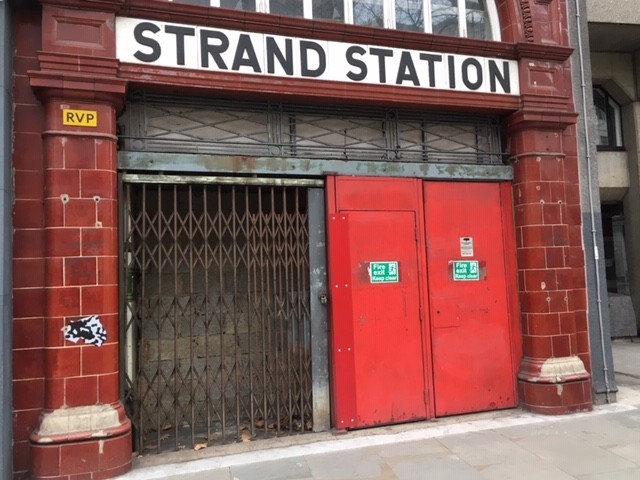
Aldwych began life as the Strand station. Hence the rather confusing sign outside the entrance. In stark contrast to those entering Fashion Week across the road our group was (mostly) middle aged and comfortably dressed. No high heels allowed on this tour!
Aldwych was never a busy station. When it opened in 1907 the first two trains didn’t have any passengers at all. Despite partial refurbishment in the 1980s passenger numbers remained low. When the station closed in 1994 only 450 people were using it every day. That said, it’s no ghost station. Indeed, it has led a significant alternative life as we discovered on the tour.
Ticket hall and entrance
The tour started in the ticket hall where our guides, Paul and Nick, provided an overview of the station. The architect, Leslie Green, designed a number of Tube stations, often with similar distinctive features. Our guides highlighted the red station frontage, the teal and cream tiling scheme and the design of the ticket office windows. And to think I’ve never given the design of underground stations a second glance before.

From the ticket hall we walked down our first set of stairs to the eastern platform. At this point I realised I hadn’t taken any photos of the ticket hall. I later regretted this as you exit via an alternative route; make sure you don’t make the same mistake if you visit.
Lift shafts
Our next stop was the lift shafts. Three shafts were dug out by hand but only one was fitted with lifts. This economy of design is reflected elsewhere in the station, from unfinished tiling to tunnels.
We discovered that one of the unfinished lift shafts was the perfect location for a music video, Prodigy’s Firestarter. Other bands, including Madness and The Kinks, have also filmed down here.
Eastern platform
The eastern platform only saw active service until 1917, at least in relation to its train service.

In World War I the platform acted as an emergency store for over 300 paintings from the National Gallery. This function was repeated in World War II when many valuable artworks were moved underground for storage. These included the Elgin Marbles, which were brought down in the lift. Our guides showed us the large looped rings installed to make their subsequent removal easier.
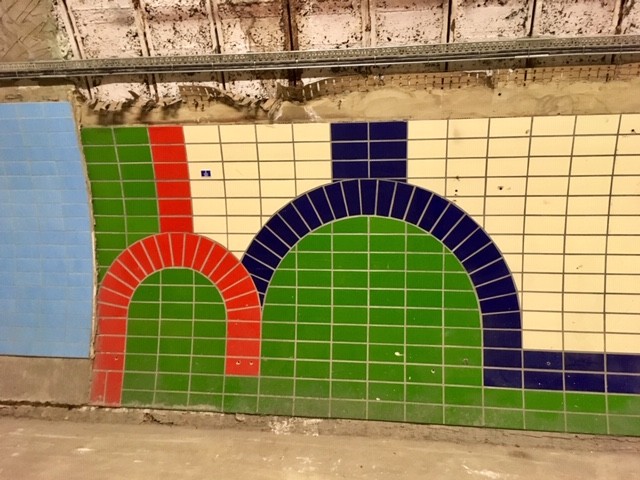
Elsewhere on the eastern platform there are experimental tiling designs. We discovered that one of Aldwych’s many alternative uses is as a drawing board for other stations.
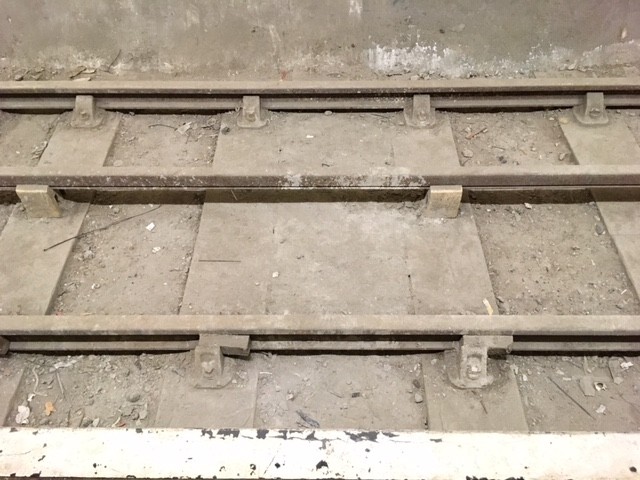
Although they might not look particularly exciting these original rails contribute to the station’s Grade 2 listing. They are very different to today’s rails; there’s no suicide pit and the sleepers are wooden. They also include an early design of insulator. This is, evidently, a big deal for insulator enthusiasts!

Posters still adorn some of the walls. Including a timely advert encouraging us to join the Common Market!
Western platform
The Western platform remained open until the station’s closure.
In World War II it was used as an overnight air raid shelter. We sat in a disused carriage and listened to a recording of Julian Andrews, recounting his time spent sheltering here.
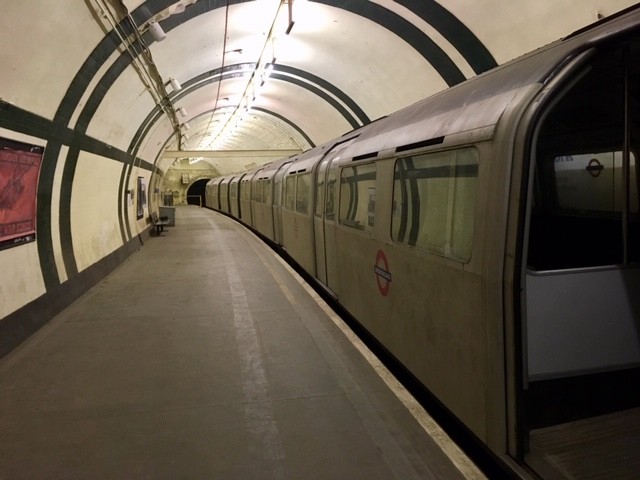
Although the government propaganda advertised a holiday camp atmosphere the reality was a lot of people in a very small space with minimal privacy and hygiene. The toilet was initially a curtained off bucket. However as the bombings dragged on an underground community was formed, offering a library, religious services and entertainers including George Formby.

Despite the lack of trains the station is still in use today. Nowadays it makes money from film and TV studios. Films such as Atonement and Darkest Hour and TV shows Sherlock and Mr Selfridge were filmed here. Hence, not everything is at it seems. The Whitechapel sign is an obvious imposter but our guide also pointed out fake tiling and wall panels left behind by the film companies.
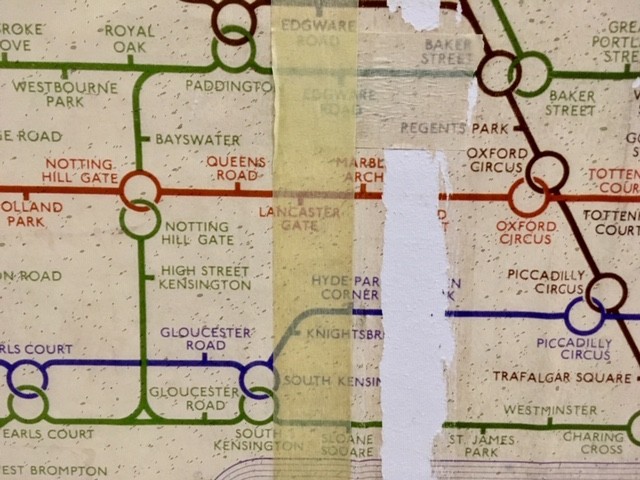
The station is also used by emergency and armed services to carry out training. Forces trained here as part of the preparation for the 2012 London Olympics and in 2015 it was used by the emergency services in a mock terrorist attack.
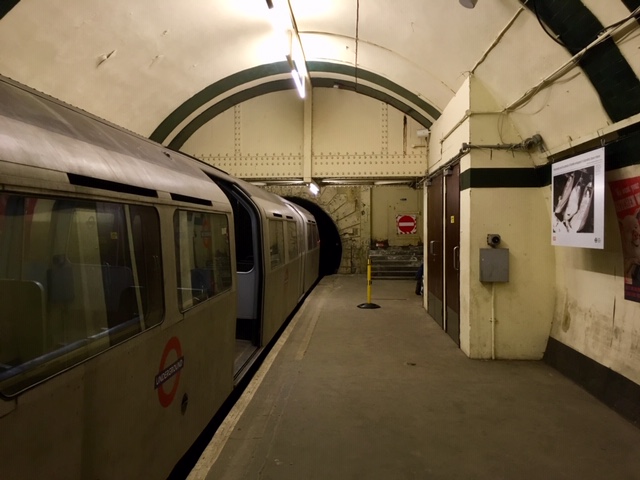
There was a lot of heavy breathing as the group climbed the 160 steps back to the surface. From where, ironically, we finished our tour in the lift.
Aldwych lifts
The Edwardian lifts weren’t very reliable and their potential refurbishment cost was one of the reasons for the stations eventual closure. The power failed on occasions so a supply of candles were kept in the lift. If the lift broke down we were shown a ‘secret’ door into the next door lift shaft from where the second lift could come and rescue passengers. Nowadays the lifts don’t move, I’m rather glad of that!
Our 75 minute tour sped by. I’m usually desperate to get out of underground stations but the tour could easily have lasted another hour. I certainly have a new found appreciation of the tunnels beneath our feet!
This trip was on my UK bucket list, pop over to my blog post to see what else is on there.
More info
- Hidden London tours are an offshoot of the London Transport Museum. Tours of a variety of underground stations (some disused, some not) are announced several times per year. Most sell out quickly so sign up to the advance notice mailing list on their website to be in with a chance.

Ah, I still remembering using this tube station! I hadn’t realised it was still put to such frequent use. #FarawayFiles
I would love to do this tour! It sounds like you learnt so much. I like visiting these ‘alternative’ places. #FarawayFiles
This is something I’ve wanted to do for a really long time, but as I have mobility issues I’m worried about the amount of stairs – how much climbing did you have to do on your tour of this station? Thanks! #FarawayFiles
Hi Keri, it would probably be quite hard as there is no lift – – and 160 steps!
Oh this is wonderful! I’ve written down all the details in my notebook it looks such a fascinating tour. Imagine that they hid all that art and the Elgin Marbles here too! I’d love to do this. Thanks for inspiring me on #FarawayFiles
This is so interesting to read, Christine. All those fabulous nuggets of information you’ve learned from the tour. Like Clare, I’m fascinated by the hidden art but also about how it’s used today. I remember the underground scene in Atonement very clearly.
#farawayfiles
.
Ahhh – at first I wasn’t thinking that I would be very interested in seeing an old subway tube, but then learning of all the history that has been housed down here makes it supremely interesting. The idea that you can get a real sense of what it might have been like to hide down here during bombing raids makes history more palpable. Thank you for sharing this unique experience with #FarawayFiles, Erin
That looks brilliant, would love to explore down there.
I’d love to go on this tour! I’m putting it on my London List. So much fascinating history, and it definitely brings to light all the uses of such places beyond the obvious, that is… #farawayfiles
Hi Christine,
Would you consider licensing your pictures ot a UK publisher to be used in a book called Abandoned London? If so, could you drop me an email, please.
Thanks
Terry